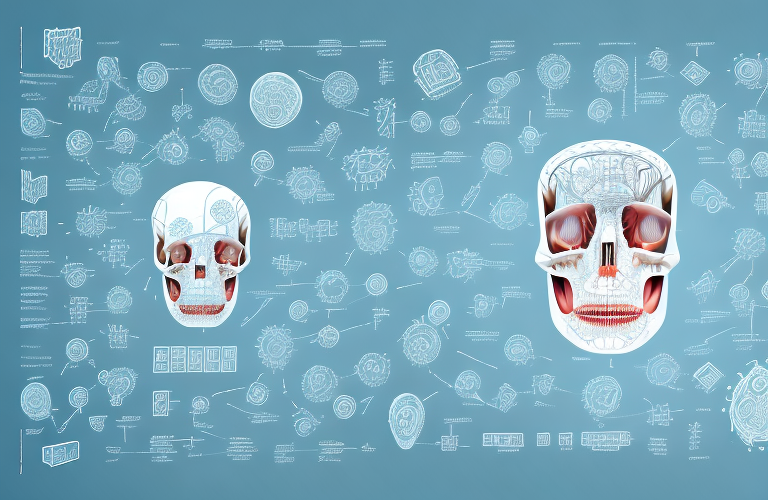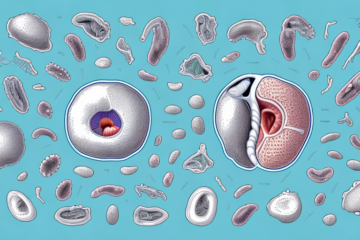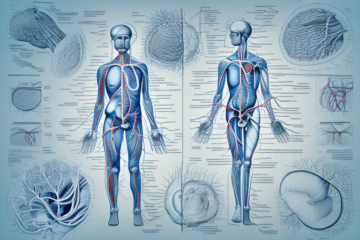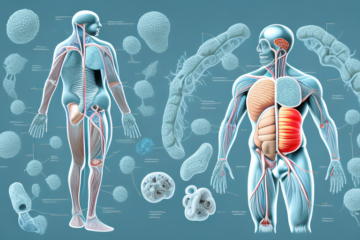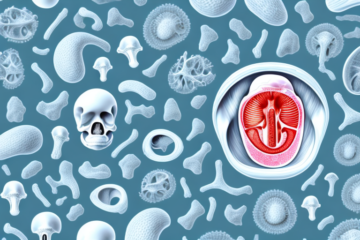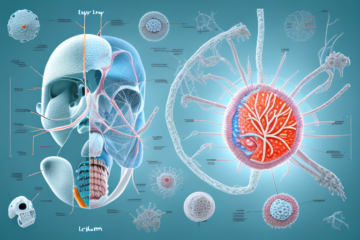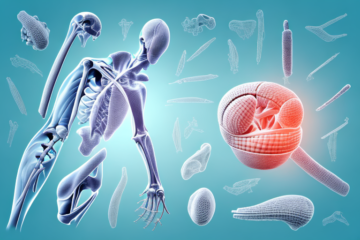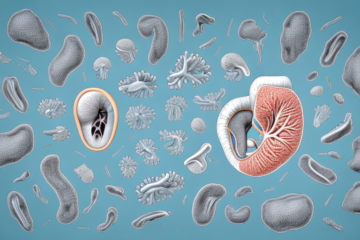The appendix is a small, pouch-like organ located at the end of the large intestine. This organ has been the subject of much curiosity and speculation in the medical community for centuries, with researchers studying its function, evolution, and role in human health. In this article, we will explore everything you need to know about the appendix, including its anatomy, its function, common health conditions associated with it, diagnosis, treatment options, and tips for maintaining a healthy appendix.
What is the Appendix and Where is it Located?
The appendix is a small, finger-shaped pouch attached to the cecum, which is the beginning of the large intestine. It is located in the lower right-hand side of the abdominal cavity, close to where the small and large intestines meet. The appendix is normally about 3-4 inches long but can vary in length from less than an inch to more than six inches depending on the individual.
Although the appendix was once thought to be a vestigial organ with no real purpose, recent research suggests that it may play a role in the immune system. The appendix contains lymphatic tissue, which helps to produce antibodies and fight off infections. However, in some cases, the appendix can become inflamed and infected, leading to a condition known as appendicitis. If left untreated, appendicitis can be life-threatening and may require surgical removal of the appendix.
Understanding the Function of the Appendix
The function of the appendix has been a subject of debate for a long time. For a long time, it was seen as a vestigial organ with little to no purpose. However, recent research has indicated that the appendix plays a vital role in the immune system. The appendix is believed to store beneficial bacteria that aid in digestion and helps keep the gut healthy. It is also thought to produce and release some white blood cells, which help fight infections.
Furthermore, the appendix has been found to act as a “safe house” for good bacteria during times of illness or infection. When the body is fighting off harmful bacteria, the good bacteria in the gut can be depleted. The appendix can release the stored beneficial bacteria to help replenish the gut and restore balance. This is why removing the appendix can sometimes lead to digestive issues and an increased risk of infections.
The Evolution of the Appendix in Humans
The human appendix has been the subject of much debate regarding its purpose and evolution. Many evolutionary biologists believe that the appendix was once an essential part of the digestive system, helping our ancient ancestors digest the tough plants they were eating. As humans evolved to eat more cooked and processed foods, the need for the appendix decreased, causing it to slowly lose its function. While this theory hasn’t been fully proven, it offers a compelling explanation for the appendix’s purpose in human biology.
However, recent studies have suggested that the appendix may not be entirely useless. It has been found to contain a high concentration of immune cells, suggesting that it may play a role in the immune system. In fact, some researchers believe that the appendix may act as a “safe house” for beneficial gut bacteria, allowing them to repopulate the gut after a bout of illness or antibiotic use.
Despite these new findings, the appendix is still considered a vestigial organ, meaning it has lost its original function over time. However, its potential role in the immune system and gut health highlights the complexity of human biology and the importance of further research in this area.
Common Health Conditions Associated with the Appendix
One of the most common health conditions associated with the appendix is appendicitis. Appendicitis is an acute inflammation of the appendix, which can cause severe abdominal pain, vomiting, and nausea. Other signs may include fever, chills, and constipation or diarrhea. If left untreated, appendicitis can lead to dangerous complications, such as the formation of an abscess.
Another health condition that can affect the appendix is appendiceal tumors. These tumors can be benign or malignant and can cause symptoms such as abdominal pain, bloating, and changes in bowel habits. Treatment for appendiceal tumors may involve surgery to remove the appendix and any affected tissue.
In some cases, the appendix may become blocked by fecal matter or other foreign objects, leading to a condition called appendiceal obstruction. This can cause similar symptoms to appendicitis, such as abdominal pain and nausea. Treatment for appendiceal obstruction may involve surgery to remove the appendix and clear any blockages.
Symptoms of Appendicitis: When to Seek Medical Attention
If you experience persistent abdominal pain, especially if it is in the lower right-hand side of your abdomen, you should seek medical attention immediately. Other symptoms that may indicate the presence of appendicitis include fever, nausea, vomiting, and loss of appetite. In some cases, the pain may worsen with movement, coughing, or sneezing. If you experience any of these symptoms, seek medical attention immediately to prevent complications.
Appendicitis is a medical emergency that requires prompt treatment. If left untreated, the appendix can burst, leading to a potentially life-threatening infection. It is important to note that not all cases of appendicitis present with the same symptoms. In some cases, the pain may be located in the upper abdomen or around the belly button.
Diagnosis of appendicitis typically involves a physical exam, blood tests, and imaging tests such as an ultrasound or CT scan. Treatment usually involves surgical removal of the appendix, known as an appendectomy. In some cases, antibiotics may be prescribed to treat the infection before surgery.
Diagnosis and Treatment Options for Appendicitis
Diagnosis of appendicitis usually involves a physical exam, blood tests, and imaging tests such as ultrasounds or CT scans. Once diagnosed, treatment will typically involve antibiotics to control the infection, followed by surgical removal of the appendix, known as an appendectomy. The surgery can be performed laparoscopically, which involves making several small incisions in the abdomen, or traditionally, with a single incision made in the lower right-hand side of the belly. After surgery, patients may experience some discomfort and will need to rest and recover for several days.
It is important to seek medical attention promptly if you suspect you may have appendicitis, as a ruptured appendix can lead to serious complications such as peritonitis. In some cases, a ruptured appendix may require a longer hospital stay and additional treatment such as drainage of abscesses or the use of a temporary colostomy.
While appendicitis is a common condition, it is important to note that not all cases of abdominal pain are caused by appendicitis. Other conditions such as gastroenteritis, ovarian cysts, or kidney stones can cause similar symptoms. It is important to consult with a healthcare professional to determine the underlying cause of your symptoms and receive appropriate treatment.
Surgical Removal of the Appendix: Risks and Benefits
Appendectomy is a common surgery with a high success rate. The removal of the appendix usually does not cause any long-term side effects, and patients can typically return to their normal activities within a few weeks. However, all surgeries carry some risks, including bleeding, infection, and complications related to anesthesia. If you are considering an appendectomy, be sure to discuss the potential risks and benefits with your doctor beforehand.
It is important to note that in some cases, the appendix may rupture before surgery, which can lead to more serious complications. In these cases, the surgery may be more complex and require a longer recovery time. Additionally, some patients may experience digestive issues or changes in bowel habits after the surgery, although these are usually temporary. Your doctor can provide more information on the specific risks and benefits of an appendectomy based on your individual circumstances.
Recovery Time After an Appendectomy
The recovery time following an appendectomy will depend on the type of surgery performed and the individual patient’s circumstances. Most patients can expect to be in the hospital for one to two days following surgery and experience some pain and discomfort for several days afterward. The patient should avoid strenuous activity for a few weeks and follow their doctor’s instructions for optimal recovery.
It is important for patients to monitor their incision site for signs of infection, such as redness, swelling, or discharge. If any of these symptoms occur, the patient should contact their doctor immediately. In addition, patients should follow a healthy diet and stay hydrated to aid in the healing process.
Some patients may experience complications after an appendectomy, such as bleeding or infection. It is important for patients to attend all follow-up appointments with their doctor to monitor their recovery and address any potential issues. With proper care and attention, most patients can expect to fully recover within a few weeks following an appendectomy.
Complications That May Arise After an Appendectomy
While appendectomy is generally a safe procedure, some complications can occur. One possible complication is infection, which can occur at the incision site or within the abdominal cavity. Another potential issue is the formation of an abscess or bowel obstruction. Patients who experience severe pain, persistent fever, or other unusual symptoms after an appendectomy should seek medical attention immediately.
It is important to note that some patients may experience long-term complications after an appendectomy. These can include chronic abdominal pain, digestive issues, and even infertility in rare cases. It is important for patients to discuss any concerns or potential risks with their surgeon before undergoing the procedure.
Lifestyle Changes to Promote a Healthy Appendix
While there are no guaranteed ways to prevent appendicitis, there are some lifestyle changes that may help promote good digestive health and reduce the risk of inflammation. Eating a diet rich in fiber, drinking plenty of water, and staying physically active can help keep the digestive system functioning efficiently. Avoiding smoking and limiting alcohol and caffeine intake may also help promote a healthy appendix and reduce the risk of inflammation and other health issues.
In addition to these lifestyle changes, it is important to maintain a healthy weight. Obesity has been linked to an increased risk of appendicitis, as well as other digestive issues. Maintaining a healthy weight through a balanced diet and regular exercise can help reduce this risk.
Another way to promote a healthy appendix is to manage stress levels. Chronic stress can weaken the immune system and increase inflammation in the body, which can contribute to the development of appendicitis. Practicing stress-reducing techniques such as meditation, yoga, or deep breathing exercises can help manage stress levels and promote overall health.
Maintaining Good Digestive Health: Tips and Strategies for Optimal Wellness
In addition to lifestyle changes aimed at promoting a healthy appendix, there are several additional steps you can take to maintain optimal digestive health. These include eating a balanced diet rich in fruits, vegetables, and lean proteins. Drinking plenty of water and staying active can also help prevent digestive issues. If you experience persistent digestive problems, such as bloating, gas, or diarrhea, talk to your doctor to help determine the underlying cause and the best course of treatment for your individual circumstances.
Overall, while the appendix may be a small and seemingly insignificant organ, it plays a vital role in the immune system and digestive health. Understanding its function, the health conditions associated with it, and how to promote good health can help you maintain optimal wellness and avoid potentially serious health complications.
Another important factor in maintaining good digestive health is getting enough fiber in your diet. Fiber helps to keep your digestive system running smoothly and can prevent constipation. Good sources of fiber include whole grains, fruits, vegetables, and legumes.
In addition, it’s important to limit your intake of processed and high-fat foods, as these can contribute to digestive issues such as heartburn and acid reflux. It’s also a good idea to avoid smoking and excessive alcohol consumption, as these can irritate the digestive system and lead to long-term health problems.

